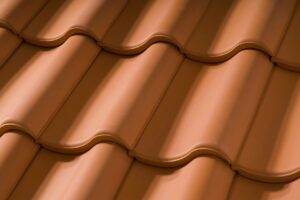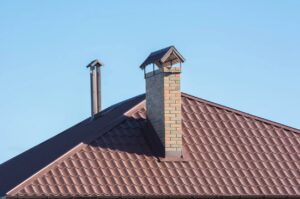
Do you have a tile or metal roof? If so, you need to take the necessary steps to protect it from wind damage. Strong winds can cause serious damage to your roof and result in costly repairs. Luckily, there are a few simple things you can do to help keep your roof strong and resilient against wind damage.
In this blog post, we’ll discuss five ways to keep your tile or metal roof in top condition and prevent wind damage. Let’s get started!
- Inspect Your Roof Regularly
Regular inspection of your tile or metal roof can help you detect any potential wind damage before it becomes a problem. Check for missing tiles or shingles, loose flashing, or loose nails. Make sure to look for any areas that may have been damaged by hail, fallen branches, or other debris. Additionally, look for any cracks or gaps in the sealant around your chimney and pipes.
It’s also important to inspect the interior of your home for any signs of water damage. Water stains on walls and ceilings can be indicative of a leak from your roof.
If you notice any of these issues, contact a professional roofer to assess the situation and make any necessary repairs. It’s recommended to have a professional inspect your roof at least once a year. This can help you catch any small problems before they become more serious and expensive to repair. If you live in Southwest Florida, look no further than ProCraft Exteriors to inspect your roof, click here to schedule your inspection!
- Keep Your Gutters Clean
Having clogged or backed-up gutters can be a serious problem when it comes to protecting your roof from wind damage. When water is allowed to collect in gutters, the extra weight can pull on them and cause them to come off the roof, allowing wind to get underneath them and cause damage. To prevent this, it’s important to keep your gutters clear of debris. Check them periodically and remove any leaves or sticks that may have built up in them. If you find that they’re not draining properly, you may need to call in a professional to inspect the issue. Also, make sure that your downspouts are extended away from your home, as this will help water drain away from the foundation and lessen the risk of flooding.
Taking care of your gutters will help ensure that your roof is secure and protected from wind damage.

- Trim Trees Around Your Home
One of the most important steps you can take to protect your tile or metal roof from wind damage is to trim trees and shrubs around your home. Overgrown foliage such as large trees, thick shrubs, and tall grasses can create added wind resistance around your roof, potentially causing it to move and even become damaged in high winds. Make sure to inspect trees and shrubs regularly for signs of damage and keep them trimmed to reduce the chance of wind damage to your roof. When trimming, be sure to keep branches away from the roof itself so they can’t be blown into it during a storm. It’s also important to remove any dead or damaged branches since they can become projectiles in high winds. Finally, if any trees or shrubs are in close proximity to your roof, it’s a good idea to have an arborist inspect them regularly to make sure they’re not in danger of falling onto your roof.
Taking these steps can help ensure that your tile or metal roof is well protected from wind damage.
- Remove Debris From Your Roof
Debris, such as leaves and sticks, can accumulate on your roof and cause damage if it’s not removed regularly. Wind gusts can catch the debris and cause it to fly into the air or roll around on the surface of your roof, causing scratches or dents. To prevent this, it’s important to keep your roof clear of debris at all times.
The best way to remove debris from your roof is to use a soft brush or broom. This will help you safely sweep away any debris without damaging the surface of your roof. Be sure to take extra care when cleaning around any vents, pipes, or other roof protrusions.
You should also inspect your roof for any mold, mildew, or algae growth that could be caused by damp debris. If these are present, you should use a pressure washer with an appropriate cleaner designed for roofs. It’s important to avoid using a pressure washer on your roof if there is any kind of cracking or warping present, as this can cause further damage.
Finally, you should also look for any animal nests that may have formed in or around your roof. Animal droppings and nesting materials can attract insects and rodents, so it’s important to remove these as soon as possible.
By regularly removing debris from your roof, you can ensure that it remains strong and intact in the face of strong winds.
- Install Hurrican Straps or Clips
Hurricane straps or clips are a great way to protect your tile or metal roof from wind damage. These straps or clips help to anchor your roof securely in place, making it less likely to be affected by strong winds.
When installing hurricane straps or clips, make sure you use the right size for your roof type. The most common sizes are 3/4”, 1” and 1-1/4” wide, so be sure to measure the width of your roof before purchasing the straps or clips. You’ll also want to make sure that the straps or clips you choose are made from corrosion-resistant material like stainless steel or aluminum.
Before installing the straps or clips, make sure the surface of your roof is clean and free of any debris. Then use a drill and screws to secure the straps or clips into the roof decking. Be sure to read the manufacturer’s instructions carefully before beginning installation.
By installing hurricane straps or clips on your tile or metal roof, you can ensure that it is firmly secured and better protected against strong winds. It’s a simple step that can help you keep your roof looking its best and prevent costly repairs due to wind damage.
